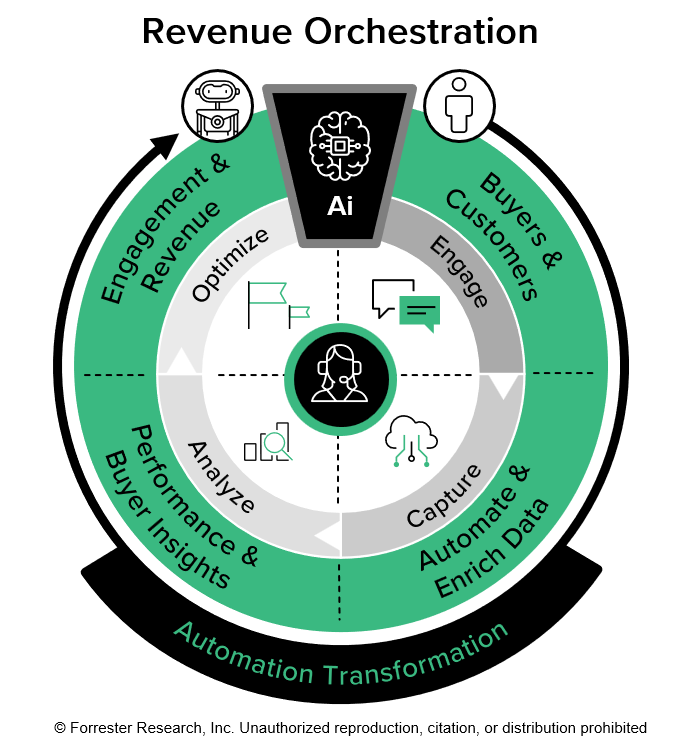A New Supergroup For Revenue Technology Emerges: Revenue Orchestration Platforms
Supergroups Are Back!
boygenius have topped album charts worldwide and scooped up multiple Grammys in the process for its debut album, “the record.” The band, featuring Julien Baker, Lucy Dacus, and, of course, Phoebe Bridgers, is a modern example of a supergroup, bringing successful musicians and artists together to create something completely new.
The term “supergroup” became popular in the late 1960s with rock groups such as Cream and Blind Faith, but across the years and musical genres, we’ve seen lots of different types. In the 80s, country superstars Johnny Cash, Willie Nelson, Kris Kristofferson, and Waylon Jennings formed the Highwaymen, the first country supergroup. In the late 80s, Bob Dylan, George Harrison, Roy Orbison, Tom Petty, and Jeff Lynne formed the Traveling Wilburys and enjoyed multiple hits. Even opera has had a supergroup, when José Carreras, Plácido Domingo, and Luciano Pavarotti formed the Three Tenors in the 90s.
A New Revenue Technology Supergroup
In the world of revenue technology, three distinct categories have converged to form a new supergroup of revtech capabilities. Convergence of functionality across the key providers in sales engagement, conversation intelligence, and revenue operations and intelligence platforms has evolved to the point that these three functionality categories can now be found in one platform that buyers can purchase, which here at Forrester we refer to as a revenue orchestration platform. Forrester defines revenue orchestration platforms as technology that enables B2B frontline resources to design, execute, capture, analyze, and improve buyer and customer engagement while optimizing productivity and internal revenue processes.
 Revenue orchestration convergence timeline: an overview of the key acquisitions and product expansions driving category convergence
Revenue orchestration convergence timeline: an overview of the key acquisitions and product expansions driving category convergence
In providing one place to manage core selling activities, buyer engagement, analytics, and related revenue processes, revenue orchestration platforms (ROPs) are the closest revenue technology has come thus far to providing a “single pane of glass” for frontline resources.
Revenue Orchestration Platforms Optimize Engagement And Revenue Workflow
ROPs enable B2B organizations to orchestrate and maximize commercial performance from their revenue motions, including new logo acquisition as well as renewal and expansion motions for existing customer relationships. They allow individual sellers to orchestrate their own engagement while providing leadership and operations with insight on how to effectively orchestrate teams and the underlying processes supporting engagement and revenue management. With AI at the core of these platforms, driving automation, insights, and guidance, ROPs enable four integrated and iterative processes:
- Engagement. By automating and orchestrating manual repetitive prospecting tasks, ROPs enable frontline resources to execute effective and efficient engagement and conversion across multiple channel touchpoints including email, voice, text, and video.
- Capture. The automatic capture of buyer interaction and matching to CRM contact, opportunity, and account records is critical to the value of ROPs to eliminate manual activity tracking and improve data quality. ROPs also must combine and augment interaction data with other internal and external signals or triggers to help guide and improve buyer interaction, productivity, and internal processes.
- Analysis. ROP solutions act as the central hub for buyer signal capture and association to deals and thus are the source of buyer engagement for sellers. Sales teams require analysis that is custom to their needs, which is why these solutions have built sales-specific algorithms to analyze buyer signals and derive unique insights that improve outcomes and increase transparency.
- Optimization. Insights are one thing, action another. Insights must provide clear opportunity for improvement and optimization of how sellers execute engagement with buyers as well as their other internal responsibilities such as pipeline management, forecasting, and opportunity or account management. ROPs connect insights to action by providing both structured and unstructured (or dynamic) guidance on what to prioritize next.
 Revenue orchestration platforms: a seller-centric platform to optimize customer engagement and revenue management
Revenue orchestration platforms: a seller-centric platform to optimize customer engagement and revenue management
Buyer Challenges In A Changing Market Landscape
Revenue leaders face pressures to fill critical capability gaps, drive greater cost-efficiency, and enable better integration and adoption of tech. Frontline sellers are looking for more streamlined experiences, and generative AI is forcing organizational leaders to search for high-impact use cases to show its value. ROPs are built to address these challenges, but to realize these benefits, you will have to select from a diverse set of vendors that vary by size, type of offering, and use case differentiation. While ROPs complement, extend, and even displace sales force automation functionalities, buyers must consider a provider’s ability to meet varied and evolving business needs beyond just functionality.
Forrester Is At The Forefront Of Analysis And Evaluation Of This Category
Forrester is focusing its research efforts on this new category to bring revenue leaders insight to understanding this new supergroup of technology and what it means for B2B revenue functions. Our report, The Revenue Orchestration Platforms For B2B Landscape, Q1 2024, has just been published for clients on the Forrester portal, providing an overview of this new category, exploring the market maturity and dynamics, and highlighting the range of providers covering the space. Also just published is an introductory report to the category that builds on the landscape to explore the core processes and capabilities within ROPs, implications for buyers, and an assessment of the pros and cons of consolidation. These are appetizers to the main event, when we’ll publish a Forrester Wave™ evaluation on revenue orchestration platforms in early Q3.
